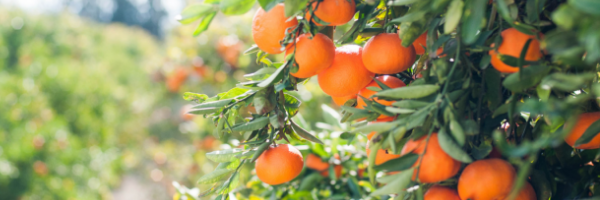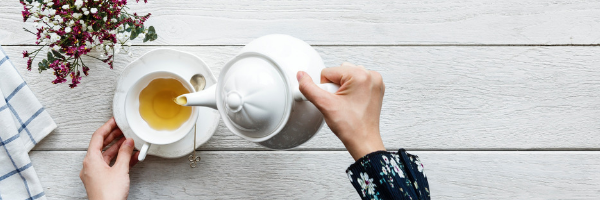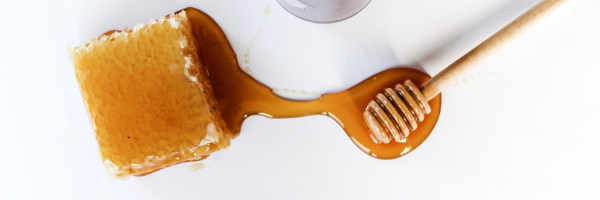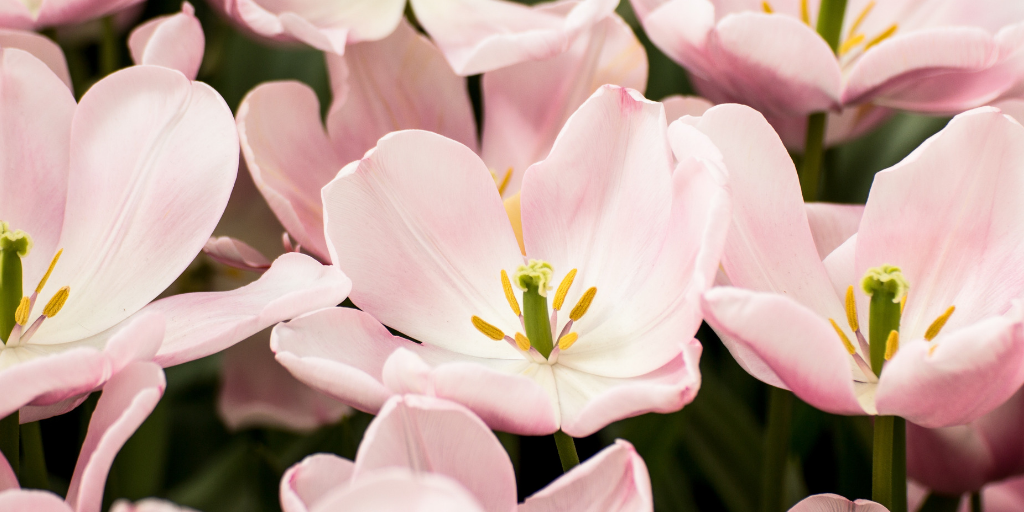Springtime isn’t just about flowers and sunshine. It’s hay fever season too and for sufferers of the dreaded springtime sneeze, the joy of the season can quickly turn into a nightmare!
If endless sneezing, stuffy nose and scratchy throat get the better of you at this time of year, I’ve got some wonderful natural tips to help soothe and reduce the severity of springtime hay fever.
What is hay fever?
Hay fever is your immune system’s response to substances like pollen and dust. When these particles come in contact with cells in your throat, nose, lungs and mouth it triggers your body to release a protein called histamine. It’s histamine that causes inflammation and symptoms like coughing, sneezing and itchy eyes.
The below remedies are effective, natural alternatives to pharmacy medication.

Vitamin C
Research shows Vitamin C acts as a natural antihistamine, which can reduce the release of histamine and help manage the symptoms. The thing is, your body can’t produce or store Vitamin C, so you need to ensure your diet includes foods rich in this water-soluble vitamin. These include parsley, mustard spinach, kale, broccoli, kiwi fruit, lemons and oranges. Vitamin C is also available in supplement form.
Quercetin
The antioxidant Quercetin is also another natural antihistamine option. Studies show quercetin can effectively deliver relief from inflamed airways and inhibit the release of histamine. Fill your plate with more leafy vegetables, broccoli, red onions, peppers, apples, grapes to increase your intake of quercetin. It’s also found in black and green teas and good news for vino lovers, red wine. Quercetin can be taken as a supplement too.
Garlic
Garlic is possibly one of the most potent superfoods Mother Nature blessed us with. One of its many benefits is the ability to combat colds and hay fever symptoms. It too acts as a natural antihistamine. To reap the potent benefits of garlic, the best way to eat it is raw. This doesn’t sound too appealing, I know, but you can chop a raw clove of garlic into several ‘pill’ sized pieces and simply swallow it with a glass of water. No chewing required!
Horseradish
Horseradish is a powerful herbal medicine and one of the most potent natural hayfever remedies. It’s especially potent in clearing upper respiratory passages and acts like a decongestant which helps drains excess mucus from the nasal passage. The presence of allyl isothiocyanate – found in many common cruciferous vegetables – gives it the antibacterial punch. It’s also packed with Vitamin C.
Again, the best way is to eat horseradish raw and fresh. You can grate it and take together with the garlic. This makes an incredibly powerful duo for fighting hay fever naturally.
Consider nasal irrigation
Nasal irrigation can treat congested sinuses, colds and allergies.
One of the most common DIY nasal irrigation techniques is using a neti pot. This is a small vessel, similar to a miniature teapot, that has a long sprout to flush out clogged nasal passages. The liquid used in neti pot irrigation is sterile water or a saline solution.

Drink herbal teas
Herbal teas are wonderful to sip on all year round and if you’re looking for natural hayfever remedies, try a herbal blend. During spring, the right types of herbal tea can provide relief of hayfever symptoms. I can recommend some good herbal teas you may already have in your cupboard; chamomile, peppermint and nettle. All three have been shown to reduce levels of histamine, relieving nasal and sinus issues.
In addition to their impact on histamine, they also offer other healing benefits. Full of iron, Vitamin C and calcium, nettle tea makes a great ‘pick me up’ if you’re feeling run down.
Chamomile tea has strong antibacterial properties, helping to strengthen the immune system and peppermint is great for aiding digestion.
These teas can definitely help relieve symptoms but if you’re looking for a really potent option, a tea blended by a naturopath or herbalist is your best bet.
We have a wonderful herbal tea called Sinu, specifically blended for the relief of sinus including herbs used traditionally to support all areas of those hayfever symptoms; the itchy eyes, nose running like a tap, scratchy throat, blocked and sore sinuses and that mandatory sneezing! Special instructions on the best way to use Sinu tea is included in each pack.
Brewing yourself a pot and sipping on it throughout the day will also help keep you hydrated When your body is properly hydrated, the mucous membranes in your nose remain moist and can expel allergens more easily.
Fenugreek
If you’re waking up with a runny nose and feel like scratching your eyes out because of seasonal allergies, try eating fenugreek seeds. Fenugreek is a herb that you can use to desensitise your immune system. It’s also a mucolytic, a weird sounding word that basically means it naturally loosens phlegm and eases coughing and sneezing.
Don’t eat fenugreek seeds raw, you can lightly toast them which will caramelise the seeds or soak overnight and they’ll take on a jelly-like texture. Fenugreek seeds can also be sprouted or brewed as a tea.
Homeopathic remedies
Homeopathy aims to stimulate the body’s ability to heal itself using potent, natural remedies that fit the symptoms of the health issue you’re struggling with.
In the case of hay fever, the primary remedies include allium cepa, arsenicum album, gelsemium and natrum muriaticum. If you’ve never treated yourself with homeopathic remedies before, you can see a qualified homoeopath for a course of treatment.
Fill your plate with anti-inflammatory foods
I’ve covered some specific foods and herbs above that can have a direct effect of inhibiting cough and sneeze-inducing histamine. It’s also a good idea to load up your diet with anti-inflammatory foods in general.
A strong, healthy body has a better chance of combating the spring sneezes so take every meal as an opportunity to give your body the foods it needs to be energised.
Some examples of the best anti-inflammatory foods include kale, wild salmon, mushrooms, broccoli, blueberries, sauerkraut, bone broth and herbs and spices like ginger, turmeric and garlic.
Foods full of essential fatty acids should also be eaten daily; flaxseed, chia seeds, and walnuts are great for Omega 3’s and so are fatty fishes like mackerel and salmon.
Apple cider vinegar (ACV) will also make a healthy addition to your diet. Take it in warm water each morning (1- 2 tablespoons) or create a simple raw apple cider salad dressing. This one’s a beauty –
In a small jar, combine 2 cloves of crushed garlic, 1 teaspoon Dijon mustard, 1 teaspoon honey, ¼ cup apple cider vinegar, salt, pepper. Let sit 5-10 minutes to let the flavours infuse then shake the mixture all up in the jar before serving.

Local honey and honeycomb
Research has shown local honey can help reduce hay fever symptoms through a process called immunotherapy. During immunotherapy, you’re exposed to small amount of the substance you’re allergic to, which in the case of the spring sneezes, is pollen. The idea is over you’ll build up some level of resistance to it.
It may sound obvious, but ‘local honey’ is honey produced in nearby areas – approx 80km radius – because it’s this honey that contains local plant pollens to which you’d be allergic.
Following this process, start eating a small amount of honey or honeycomb daily before hay fever season hits and continued through the season to maximise the results.
I hope these tips will help relieve some of the horrible symptoms of hay fever so you can truly embrace and enjoy this wonderful new season. If you have of your own tips, share them in the comments below or on the Olive & Ash Facebook page. I love hearing from you!
Deb x
